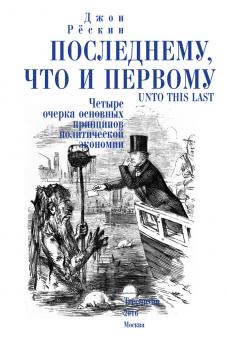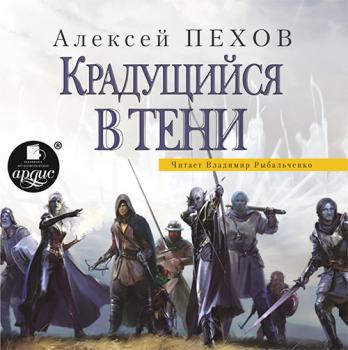ТОП просматриваемых книг сайта:
ЛИТМИР - LITMIR.BIZ - Электронная библиотека
Скачивание или чтение онлайн электронных книг.Аннотация
Книга является практическим пособием по ведению психологических групп, в ней представлен анализ всех наиболее важны; моментов этой работы. Помимо конкретных рекомендаций, в ней изложены теоретические основы групповой работы – анализируется природа индивидуальной и групповой психодинамики, обсуждается функциональная модель ведения групп, выделяются основные направления развития группы. В то же время в ней обсуждаются и практические вопросы, волнующие каждого психолога: какие навыки, знания и личностные установки необходимы ведущему группы? Какие этапы проходит группа в своем развитии? Что делать в случае возникающих затруднений? В книге также содержится описание конкретных интерактивных игр.
Книга адресована психологам, ведущим групповую работу.
Аннотация
Джон Рёскин – английский писатель, художник, теоретик искусства, литературный критик и поэт.
Выход книги «Последнему что и первому» (Unto This Last, 1860) знаменует изменение интересов Джона Рёскина от искусствоведения к области социальных преобразований.
Аннотация
Until the end of the 19th century Naïve Art, created by untrained artists and characterised by spontaneity and simplicity, enjoyed little recognition from professional artists and art critics. Naïve painting is often distinguished by its clarity of line, vivacity and joyful colours, as well as by its rather clean-cut, simple shapes, as represented by French artists such as Henri Rousseau, Séraphine de Senlis, André Bauchant and Camille Bombois. However, this movement has also found adherents elsewhere, including Joan Miró (who was influenced by some of its qualities), Guido Vedovato, Niko Pirosmani, and Ivan Generalic.
Аннотация
The smoothly metallic portraits, nudes and still lifes of Tamara de Lempicka encapsulate the spirit of Art Deco and the Jazz Age, and reflect the elegant and hedonistic life-style of a wealthy, glamorous and privileged elite in Paris between the two World Wars. Combining a formidable classical technique with elements borrowed from Cubism, Lempicka’s art represented the ultimate in fashionable modernity while looking back for inspiration to such master portraitists as Ingres and Bronzino. This book celebrates the sleek and streamlined beauty of her best work in the 1920s and 30s. It traces the extraordinary life story of this talented and glamorous woman from turn of the century Poland and Tsarist Russia, through to her glorious years in Paris and the long years of decline and neglect in America, until her triumphant rediscovery in the 1970s when her portraits gained iconic status and world-wide popularity.
Аннотация
The self-appointed “leader” of the artists’ group Die Brücke (Bridge), founded in Dresden in 1905, Ernst Ludwig Kirchner was a key figure in the early development of German Expressionism. His first works show the influence of Impressionism, Post-impressionism and Jugendstil, but by about 1909, Kirchner was painting in a distinctive, expressive manner with bold, loose brushwork, vibrant and non-naturalistic colours and heightened gestures. He worked in the studio from sketches made very rapidly from life, often from moving figures, from scenes of life out in the city or from the Die Brücke group’s trips to the countryside. A little later he began making roughly-hewn sculptures from single blocks of wood. Around the time of his move to Berlin, in 1912, Kirchner’s style in both painting and his prolific graphic works became more angular, characterized by jagged lines, slender, attenuated forms and often, a greater sense of nervousness. These features can be seen to most powerful effect in his Berlin street scenes. With the outbreak of the First World War, Kirchner became physically weak and prone to anxiety. Conscripted, he was deeply traumatised by his brief experience of military training during the First World War. From 1917 until his death by suicide in 1938, he lived a reclusive, though artistically productive life in the tranquillity of the Swiss Alps, near Davos.
Аннотация
Goya is perhaps the most approachable of painters. His art, like his life, is an open book. He concealed nothing from his contemporaries, and offered his art to them with the same frankness. The entrance to his world is not barricaded with technical difficulties. He proved that if a man has the capacity to live and multiply his experiences, to fight and work, he can produce great art without classical decorum and traditional respectability. He was born in 1746, in Fuendetodos, a small mountain village of a hundred inhabitants. As a child he worked in the fields with his two brothers and his sister until his talent for drawing put an end to his misery. At fourteen, supported by a wealthy patron, he went to Saragossa to study with a court painter and later, when he was nineteen, on to Madrid. Up to his thirty-seventh year, if we leave out of account the tapestry cartoons of unheralded decorative quality and five small pictures, Goya painted nothing of any significance, but once in control of his refractory powers, he produced masterpieces with the speed of Rubens. His court appointment was followed by a decade of incessant activity – years of painting and scandal, with intervals of bad health. Goya’s etchings demonstrate a draughtsmanship of the first rank. In paint, like Velázquez, he is more or less dependent on the model, but not in the detached fashion of the expert in still-life. If a woman was ugly, he made her a despicable horror; if she was alluring, he dramatised her charm. He preferred to finish his portraits at one sitting and was a tyrant with his models. Like Velázquez, he concentrated on faces, but he drew his heads cunningly, and constructed them out of tones of transparent greys. Monstrous forms inhabit his black-and-white world: these are his most profoundly deliberated productions. His fantastic figures, as he called them, fill us with a sense of ignoble joy, aggravate our devilish instincts and delight us with the uncharitable ecstasies of destruction. His genius attained its highest point in his etchings on the horrors of war. When placed beside the work of Goya, other pictures of war pale into sentimental studies of cruelty. He avoided the scattered action of the battlefield, and confined himself to isolated scenes of butchery. Nowhere else did he display such mastery of form and movement, such dramatic gestures and appalling effects of light and darkness. In all directions Goya renewed and innovated.
Аннотация
Древняя космическая империя, в которую случайно попадает землянин. Его космическое путешествие с Земли в столицу империи началось с роковой случайности и закончилось стрельбой и погоней. Его цель – вернуться домой, но для этого сначала нужно просто остаться в живых. Но борьба за жизнь рано или поздно заканчивается, а возвращение домой оказывается несбыточной мечтой. Как найти себя и сохранить чувство собственного достоинства в новом мире, оказавшемся далеко не сказкой, мире, где правят могущественные кланы, император является лишь отражающей волю кланов марионеткой, а единственным незыблемым правом остаётся право силы? Удастся ли землянину обрести под чужим небом новый дом?
Содержит сцены насилия!
Аннотация
Что бы там ни врала антисталинская пропаганда, легендарный СМЕРШ не был филиалом преисподней, а военные чекисты – исчадиями ада и демонами во плоти. Скорее уж военная контрразведка сравнима с Чистилищем, через которое в годы Великой Отечественной прошли сотни тысяч немецких военнопленных и миллионы советских граждан, вырвавшихся из «котлов», возвращавшихся из вражеского плена и с принудительных работ.
Вопреки расхожим мифам, деятельность СМЕРШа не сводилась к силовым задержаниям с «качанием маятника» и стрельбой с обеих рук «по-македонски» – в основном это была рутинная, тщательная, скрупулезная работа по сбору и анализу информации, может, не такая эффектная, как в кинобоевиках, но зато гораздо более эффективная. На счету Главного управления контрразведки «Смерть шпионам!» НКО СССР десятки тысяч разоблаченных немецких агентов и военных преступников, пособников врага и карателей, но главное – благодаря оперативно-розыскной и следственной работе военных чекистов были сняты подозрения с миллионов честных советских людей.
«Моменты истины» и подвиги сталинских «волкодавов», зачистка тыла Красной Армии от вражеских шпионов и диверсантов, погоня за «голубоглазыми демонами Рейха», охота за предателями и палачами – эта книга впервые проливает свет на неизвестные эпизоды тайной войны, воздавая должное лучшей военной контрразведке в истории – непобедимому и легендарному СМЕРШу.
Информация о книге
Автор произведения Анатолий Терещенко
Жанр Биографии и Мемуары
Серия Мир шпионажа
Аннотация
Студия АРДИС предлагает вашему вниманию аудиокнигу «Крадущийся в тени» – первый том цикла «Хроники Сиалы» Алексея Пехова. Вор и герой – понятия несовместимые? Как бы не так! Когда приходится делать нелегкий выбор между топором палача и Заказом на небольшую прогулку в мрачные могильники эльфийских лесов, трезвомыслящие люди выбирают топор палача, а герои, такие, как Гаррет, решают бросить кости и, надеясь, что выпадут шестерки, рискнуть. Ведь всего-то надо пробраться в заброшенную башню Ордена, надуть парочку злобных демонов, избавиться от наемных убийц, подставить воровскую гильдию, выйти из десятка кровавых стычек… ну и доехать до этих тьмой проклятых могильников вместе с небольшим отрядом отчаянных королевских рубак. Стоит ли говорить, что такой Заказ просто невозможно выполнить?
Аннотация
Россия, XXII век. Все население переехало в столицу, а Сибирь сдана в аренду китайцам. Где русские не могли вырастить картошку, у китайцев «колосятся» апельсины. «Никто никому ничего не должен» – девиз, под которым живет Россия-Москва на китайские деньги. А однажды за двое суток Москва поросла травой с телебашню, и теперь у каждого есть выбор: хочешь – работай и живи на сотом этаже, где стебли не заслоняют солнечный свет, хочешь – ешь траву и смотри реалити-шоу «Соседи». Савелий Герц – специальный корреспондент журнала «Самый-самый», узнает – по тайным каналам: китайцы уходят из Сибири! Катастрофа! Что ждет страну в будущем? Одно пока не вызывает ни у кого сомнения: трава безобидна для человека… Но так ли это? © А.Рубанов, 2009 © Оформление ООО "Издательство АСТ, 2010 © ООО «Аудиокнига», 2017










